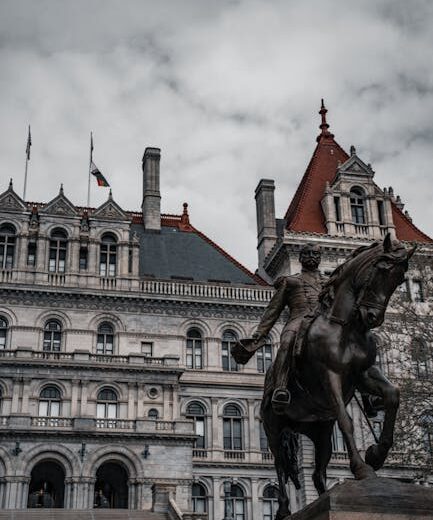Government UFO Disclosure: A Timeline of Events
In recent years, the topic of Unidentified Flying Objects (UFOs) has surged from conspiracy theories to mainstream discussions. With government disclosures and declassified documents making headlines, many are curious about the historical timeline of UFO revelations. In this blog post, we’ll walk you through the key events in government UFO disclosure, providing insights into how public perception and governmental transparency have evolved over the decades. 🌌
Table of Contents
1. Introduction: The Mystery of UFOs
2. The Early Years: 1940s-1950s
3. The Cold War Era: 1960s-1980s
4. The Modern Age of Disclosure: 1990s-2010s
5. Recent Developments: 2020 Onwards
6. Conclusion: What Lies Ahead?
7. FAQs
Introduction: The Mystery of UFOs
The fascination with UFOs is as old as the skies themselves. From ancient civilizations interpreting celestial phenomena to modern-day sightings, humanity’s interest in the unknown has never waned. However, it wasn’t until the 20th century that governments began taking an official stance on these mysterious occurrences. Let’s journey through time to explore how UFOs went from fringe to front-page news.
The Early Years: 1940s-1950s
The dawn of the UFO era began in the 1940s, a time marked by post-war anxiety and technological leaps. The infamous Roswell incident in 1947, where a supposed alien spacecraft crash-landed in New Mexico, set the stage for public intrigue and governmental secrecy. Although initially dismissed as a weather balloon, the incident fueled conspiracy theories and prompted the U.S. government to initiate investigations.
During this period, the U.S. Air Force launched Project Blue Book, a systematic study of UFO sightings, in 1952. Over the years, Project Blue Book collected thousands of reports, but eventually concluded that UFOs posed no threat to national security. This did little to quell public curiosity, as many believed the government was withholding information. 🤔
The Cold War Era: 1960s-1980s
The Cold War era intensified interest in UFOs, with both the U.S. and Soviet Union concerned about unidentified aerial phenomena as potential threats. In 1969, the Condon Report—a scientific study conducted by the University of Colorado—concluded that further study of UFOs was unlikely to yield significant advancements in scientific knowledge. Consequently, Project Blue Book was shut down.
Yet, the public’s fascination with UFOs grew, fueled by media portrayals and the burgeoning counterculture movement. Many speculated that governments worldwide were engaged in covert operations involving extraterrestrial technology. The term “UFO disclosure” began to take root as a call for transparency from those in power.
The Modern Age of Disclosure: 1990s-2010s
The 1990s and 2000s saw a shift toward greater transparency, albeit slowly. With the advent of the internet, information—and misinformation—about UFOs spread rapidly. In response, several governments began declassifying documents related to UFO investigations. The British Ministry of Defence, for example, released thousands of pages of UFO files in 2008, offering a glimpse into decades of sightings and analyses.
In the United States, public pressure mounted for more transparency. This culminated in the 2017 New York Times article revealing the existence of the Advanced Aerospace Threat Identification Program (AATIP), a secretive Pentagon initiative to study UFOs. The release of Navy pilot footage showing unidentified aerial phenomena reignited the debate, capturing global attention. 🚀
Recent Developments: 2020 Onwards
The past few years have marked unprecedented steps toward UFO disclosure. In 2020, the Pentagon formally established the Unidentified Aerial Phenomena Task Force (UAPTF) to investigate sightings by military personnel. The U.S. government’s release of a report in June 2021 acknowledged the existence of unidentified aerial phenomena and called for further investigation.
These developments have sparked renewed discussions about the implications of UFOs, not just as a scientific curiosity, but also in terms of national security and extraterrestrial life. As more countries follow suit in releasing their own UFO files, the global conversation about the unknown continues to evolve.
Conclusion: What Lies Ahead?
As we stand at the cusp of potential revelations about UFOs, the journey so far has been as enigmatic as the phenomena themselves. With governments slowly lifting the veil of secrecy, the quest for understanding continues. Whether these revelations will lead to groundbreaking scientific discoveries or simply demystify the skies remains to be seen. One thing is certain: our fascination with the unknown will keep propelling us forward. 🌠
FAQs
1. Why did the government keep UFO information secret for so long?
Historically, governments have cited national security concerns as the primary reason for withholding information. The potential for public panic and the lack of conclusive evidence also contributed to the secrecy.
2. Are UFOs considered a threat?
While earlier reports often dismissed UFOs as non-threatening, recent government documents acknowledge that some unidentified aerial phenomena could pose security risks, necessitating further study.
3. Have any other countries disclosed UFO information?
Yes, several countries, including the United Kingdom, France, and Brazil, have released files on UFO sightings and investigations, contributing to global interest and research.
4. Could UFOs be evidence of extraterrestrial life?
While some UFO sightings remain unexplained, there is no definitive evidence linking them to extraterrestrial life. Research continues to explore all possibilities.
5. How can I stay updated on government UFO disclosures?
To stay informed, follow reputable news sources, government announcements, and scientific publications that cover developments in the study of unidentified aerial phenomena.
Looking for a side hustle
Check out one of the best around atm
